 |
 |
 |
| |
SUCCESSFUL IMPLEMENTATION OF UNIVERSAL HCV SCREENING AT A SAFETY-NET HOSPITAL'S EMERGENCY DEPARTMENT DURING THE COVID-19 PANDEMIC - 6% Overall HCV prevalence: 13% in baby boomers; 4% in nonBBs, overall chronic infection 2.5%; low linkage to care
|
| |
| |
AASLD 2021 Nov 12-16
Lesley Miller1, Brandi Park1, Danielle Taylor1, Andres Palacio2, Rapheisha Darby2, Bijal Shah3 and Anna Yaffee3, (1)Emory University School of Medicine, (2)Grady Liver Clinic, Grady Health System, (3)Emergency Medicine, Emory University School of Medicine
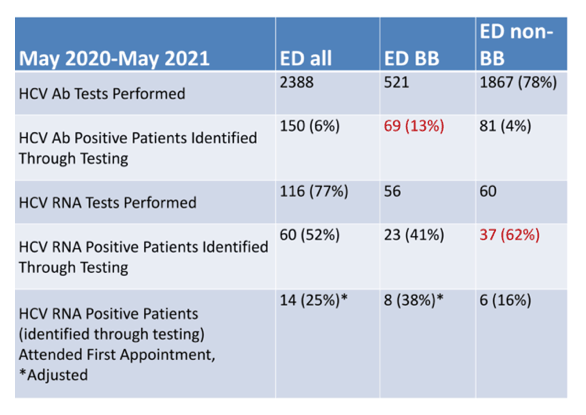
Background: In 2020, the USPSTF revised its hepatitis C (HCV) screening recommendations to include universal screening for persons aged 18-79. Grady Health System (GHS), a safety-net health system in Atlanta, GA has had an active HCV screening program for baby boomers since 2012, with a high prevalence of HCV antibody positivity (9%)as well as chronic infection (5%). The program expanded from ambulatory settings to the inpatient wards and finally to the Emergency Department (ED) in 2019. In May 2020, despite the COVID-19 pandemic, we pivoted from baby boomer (born 1945-1965) to universal HCV screening in the GHS ED. We compare HCV prevalence and linkage to care between baby boomers (BB) and non-baby boomers (non-BB) during the first year of universal ED screening.
Methods: We updated the existing electronic health record algorithm, which previously flagged only baby boomers, to flag all patients aged 18-79 with no prior HCV test or diagnosis for screening. ED triage nurses offered opt-out testing to patients whose charts were flagged by the algorithm. This triggered an order for HCV antibody with reflex to HCV RNA for the medical provider to sign. We analyzed data from May 2020 to May 2021 for outcomes including HCV Ab and RNA prevalence and linkage to care, comparing BB and non-BB.
Results: 2,388 HCV Ab tests were performed in the ED, 78% among non-BB. The overall HCV Ab prevalence was 6%, with a 13% prevalence in BB and only a 4% prevalence among non-BB. 77% of all positive HCV Ab tests were followed by a reflex HCV RNA test, and 41% of BB and 62% of non-BB were RNA positive.
The overall prevalence of chronic infection among all tested was 2.5%.
Linkage to care occurred in 25% of ED patients and was double for BB (38%) compared to non-BB (16%).
Conclusion: The launch of universal HCV testing in the GHS ED showed a high prevalence of both HCV exposure and chronic infection in this safety-net health system population. Interestingly, HCV Ab prevalence was higher among BB, while HCV RNA prevalence was higher among non-BB, likely reflecting more cleared or cured infection among BB patients. Overall, linkage to care rates were suboptimal, and higher in BB. Low linkage rates were likely due to lack of in-person navigation and care access barriers associated with the COVID-19 pandemic, which affected the entire reporting period. We suspect linkage rates were higher in BB as more of this population uses GMH as their medical home than the non-BB population.
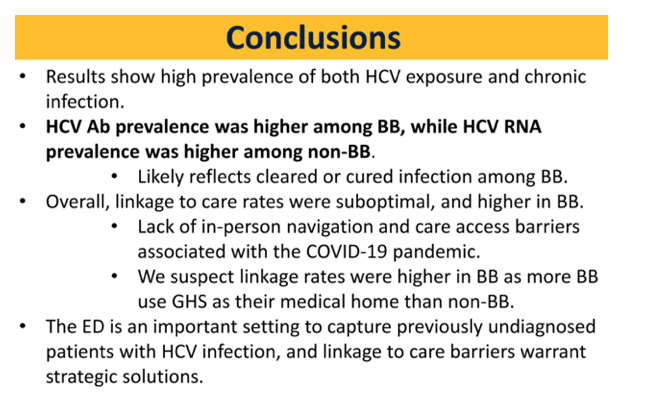
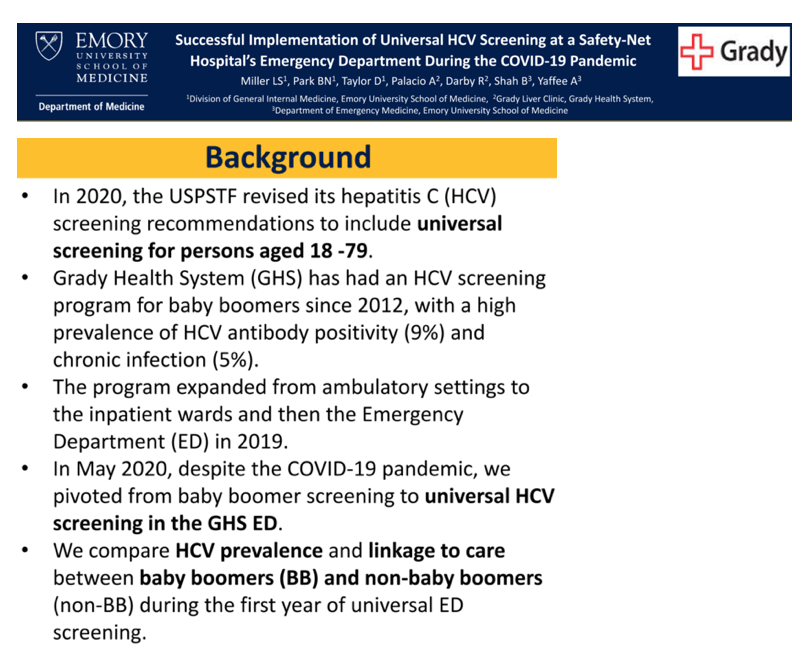
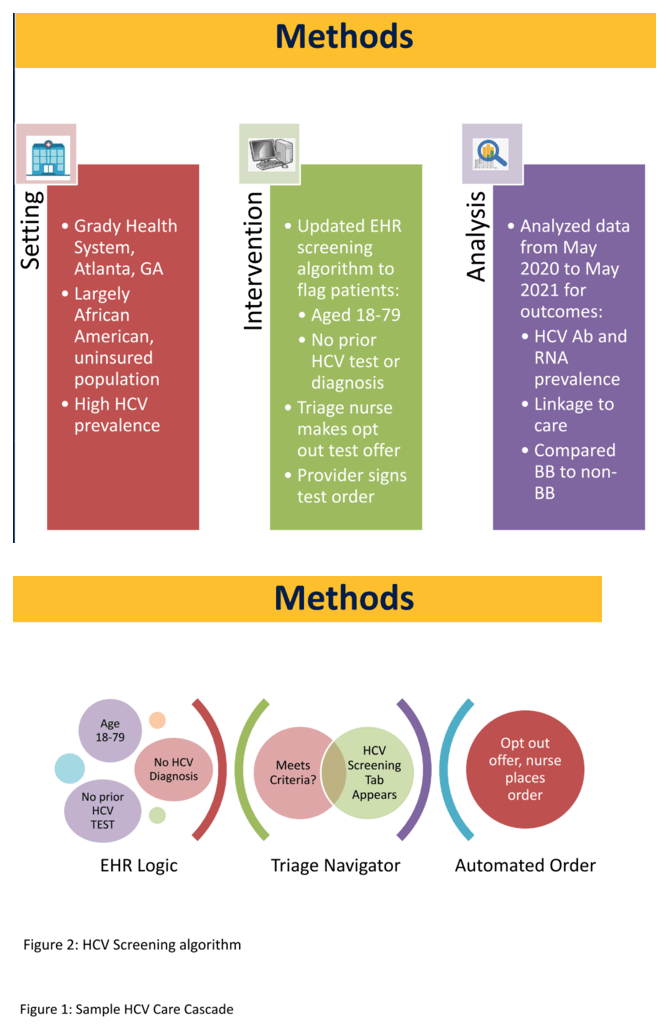
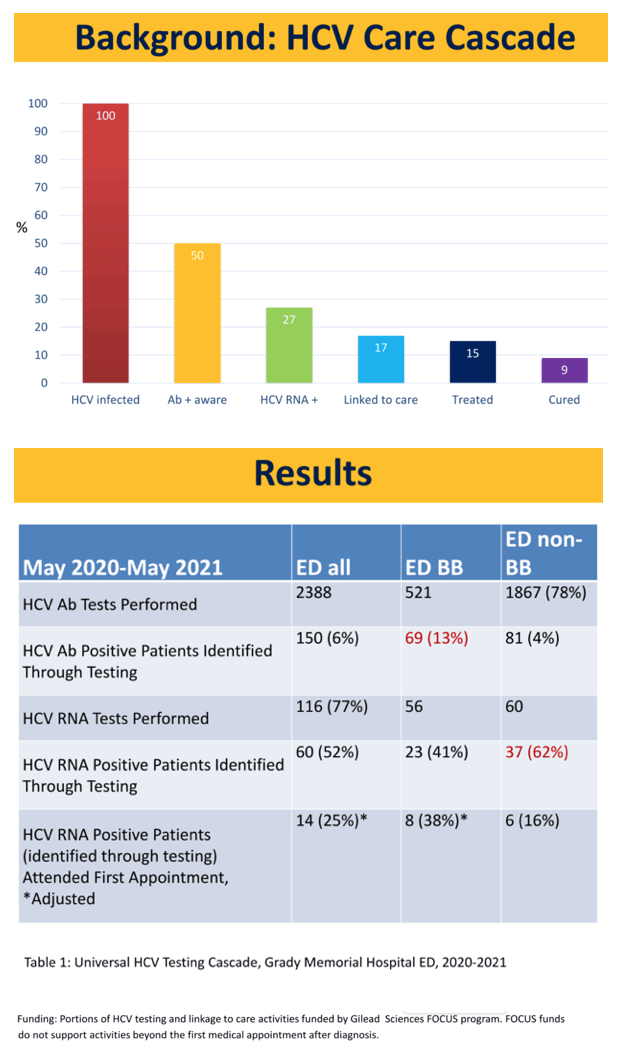
|
| |
|
 |
 |
|
|